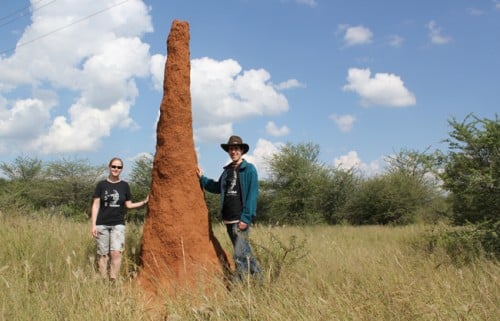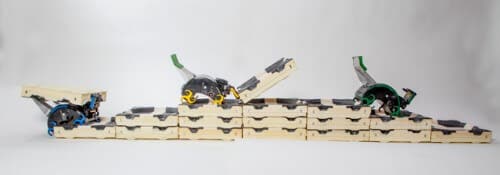The system needs neither an administrator nor communication - just simple robots, robots that cooperate by leaving signs in the environment.

In the deserts of Namibia, millions of termites participate in the construction of the nest which sometimes reaches a depth of several meters. During the year of building such a nest, many termites will die, winds and rain will make the construction process difficult and damage it, yet the task of building the nest for the termite swarm will be successfully completed.
Inspired by the resilience and collective intelligence of the termite swarm, a group of structural and computer engineers from the Harvard School of Engineering and Applied Science, in conjunction with the Wyss Institute for Nature-Inspired Engineering at Harvard University, developed a robotic construction team, the TERMES. The system needs neither an administrator nor communication - just simple robots, robots that cooperate by leaving signs in the environment.
The TERMES robots can carry blocks, build themselves stairs and climb them in order to add more blocks to the structure, and by using a few simple rules to complete a construction project. This system demonstrated the complex construction of towers, castles and pyramids from blocks made of foam. In the video attached to the link you can watch the system.
The inspiration from the termites focused on their ability to create a complex structure as a group, without guidance and supervision and without continuous communication except by changing the environment. Most construction projects are currently carried out by professional and hierarchical work teams. Usually, there is a detailed work plan on how to build, and the foreman guides the workers under constant supervision. In insect colonies, there is no giving of instructions by the queen, the individual termite does not know what its teammates are doing or what the status of the whole project is.

The termites operate according to the concept of Stigmery, communication by leaving signs in the environment and acting on these signs. Accordingly, in the TERMES system, each robot performs its construction tasks at the same time as other robots, but without knowing who else is working at the time. If one robot breaks down or has to leave it does not affect other robots. This means that the same task can be performed by five robots or by five hundred. The TERMES system provides proof of feasibility for the ability to use artificial intelligence in large systems.
The robots in the system are able to perform many tasks in the construction process using four types of simple sensors and three motors.
The common tasks are:
· Forward and backward movement and rotation
· Climbing or descending one brick height
· Lifting a brick, carrying it and putting it down
· Detecting a nearby robot or brick
· Self-mechanization in relation to a reference brick
Will we use robots in the future to build residential and commercial buildings?
Source of knowledge

3 תגובות
To be exact:
Termites build nests and breed in large areas in Africa and Australia (not only "in the Namibian deserts"),
The towers are ventilation shafts, the nests are deep below the surface,
It is estimated that the height of the tower/chimney is the depth of the nest,
And for those who want to read a little more about a key concept in the field:
http://en.wikipedia.org/wiki/Stigmergy